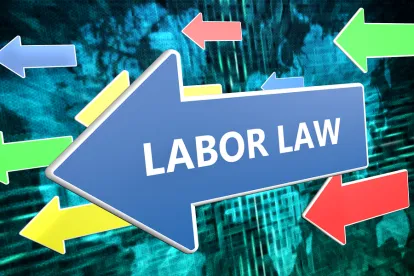As we previously reported, New York State adopted the New York Paid Family Leave Law (“Paid Leave Law”) back in April 2016. The Paid Leave Law, which requires employers in New York State to provide up to 12 weeks of paid leave benefits to employees, becomes effective beginning on January 1, 2018. With the effective date fast approaching, this article will provide an overview of key aspects of the Paid Leave Law in order to help employers as they attempt to comply with the new requirements of the Law.
Employee Benefits
The full 12-weeks of paid leave benefits will be phased in gradually over four years. Benefits are paid as a percentage of the employee’s average weekly wage or the New York State Average Weekly Wage, whichever is less, as follows:
|
Year |
Weeks of Leave |
Benefit |
|
2018 |
8 weeks |
50% of employee’s average weekly wage, capped at 50% of the New York State Average Weekly Wage |
|
2019 |
10 weeks |
55% of employee’s average weekly wage, capped at 55% of the New York State Average Weekly Wage |
|
2020 |
10 weeks |
60% of employee’s average weekly wage, capped at 60% of the New York State Average Weekly Wage |
|
2021 |
12 weeks |
67% of employee’s average weekly wage, capped at 67% of the New York State Average Weekly Wage |
By way of example, in 2018 an employee who makes an average of $1,000 per week would be eligible to receive a total of $500 (50% of $1,000) per week for 8 weeks. An employee making an average of $2,000 per week would be eligible to receive $653.96 (50% of $1,305.92, the current New York State Average Weekly Wage) per week for 8 weeks.
When Can an Employee Use Leave Benefits?
After January 1, 2018, employees may use paid leave benefits for the following purposes:
-
When the employee needs to provide care, including physical or psychological care, to a family member, due to that family member’s serious health condition;
-
To bond with a newborn child during the first 12 months of the child’s life, or, for the first 12 months following the adoption or fostering of a child; or
-
When a spouse, child, domestic partner or parent of the employee is on active military duty abroad or has been notified of an impending call or order of active military duty abroad.
Employee Eligibility
Employees who work 20 or more hours per week are eligible for up to 8 weeks of paid leave after 26 weeks of employment, while employees who work less than 20 hours per week are eligible after 175 days of work. Periods of temporary disability leave may not be counted for eligibility purposes. Independent contractors are not covered by the law, and are therefore ineligible to receive Paid Leave Law benefits.
Final Regulations Issued
On July 19, 2017, the New York Workers’ Compensation Board issued final regulations implementing the requirements of the Paid Leave Law. The final regulations provide additional clarification and context to many of the requirements under the Paid Leave Law. A copy of the regulations can be obtained here.
Funding the New York Paid Family Leave Law
The Paid Leave Law is intended to be entirely employee funded. The regulations issued by the Workers’ Compensation Board require all insurance carriers who provide short-term disability insurance to employers to now provide insurance for Paid Leave Law benefits as well. Employee contributions can be used to pay the premiums for paid leave benefits insurance. The maximum employee contribution will be set at 0.126 percent of an employee’s weekly wage, up to and not exceeding the statewide average weekly wage. Failure by the employer to provide coverage for paid leave may result in a fine equal to 0.5 percent of the employer’s weekly payroll for the period the employer failed to provide coverage, along with a separate penalty, not to exceed $500.
Paid Leave Law and Other Laws
The Paid Leave Law provides that leave covered by both the FMLA and the Paid Leave Law may run concurrently as long as the employee is given notice. More specifically, the final regulations require employers to (i) notify an eligible employee that his or her time off is designated as leave under both the Paid Leave Law and the FMLA; and (ii) provide the employee with the notice and certification forms required under FMLA. If the employer fails to provide the required notice, the employer will waive the right to have the paid leave run concurrently with FMLA leave. The final regulations confirm that leave taken for an employee’s own serious health condition under FMLA may not be counted against his or her paid leave entitlement.
Additional Requirements
The Paid Leave Law requires employers to guarantee job protection, defined as returning an employee to the same or a comparable job. In addition, employers are required to continue the health insurance of the employee on paid leave, but they may require that the employee continue to pay their health insurance premium contributions throughout the duration of leave. Finally, under the Paid Leave Law, an employer may allow employees to use accrued vacation, paid time off or other employer provided paid parental leave in lieu of applying for paid leave benefits, but employers may not require employees to exhaust all paid time off when taking paid leave.
Arbitration
Any disputes concerning eligibility, benefit rate, and duration of leave under the Paid Leave Law will be settled by arbitration. Under applicable regulations, the Chair of the Workers’ Compensation Board will appoint a panel of neutral arbitrators.
Communication to Employees
Employers must provide a written Paid Leave Law policy to their employees in advance of January 1, 2018. In addition, any employer who provides an employee handbook to employees, must include a Paid Leave Law policy in the employee handbook. Employers will also have to display a poster explaining Paid Leave Law benefits. An official poster has not yet been released by the government but will likely soon be available on the State of New York government website.
Recommendations for Employers
Employers have until the end of 2017 to prepare for the incoming Paid Leave Law requirements, which take effect on January 1, 2018. In anticipation of the effective date, employers should reach out to their insurance carriers to add Paid Leave Law insurance to their coverage. In addition, employers should take the steps necessary to notify their employees of any payroll deductions that they intend to make to cover the cost of insurance premiums and then make arrangements with their payroll companies to take deductions from eligible employees. Employers should also update their employee handbooks to include a Paid Leave Law policy, prepare a separate written Paid Leave Law policy to issue to employees as necessary and post the required Paid Leave Law Policy notice once it is available. Finally, employers should prepare for the reality that employees may be taking longer and more frequent leaves as a result of the paid leave benefits provided under the Paid Leave Law. This would include making plans for additional employee coverage and providing additional training on how to administer and cover leaves.



 />i
/>i

